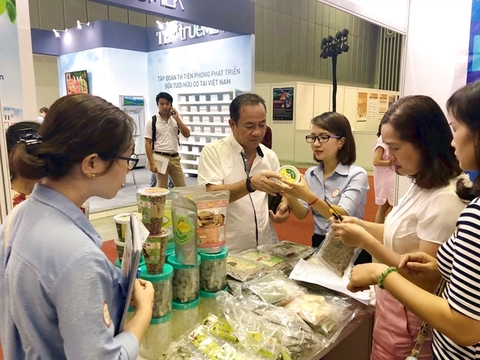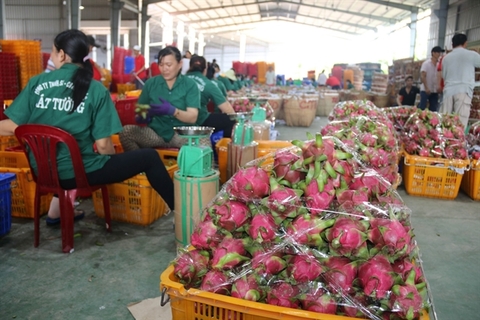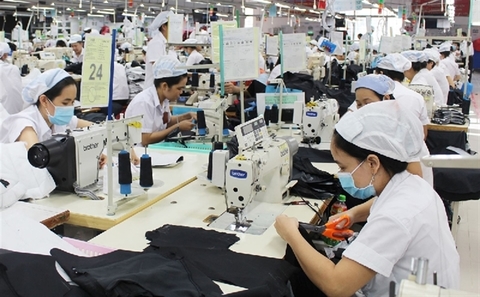Taiwan’s apparel groups set up shop
Taiwan’s apparel groups set up shop
Vietnam has become an appealing investment destination for textile, garment and leather manufacturers, in particular from Taiwan.
Taiwan-based Far Eastern New Century, an apparel conglomerate founded in 1942, is just one such foreign investor to have confirmed its strategy in Vietnam. “We cannot think of a better place to build our new manufacturing base. Vietnam offers affordable, high-quality labour, and stands to possibly benefit from free trade agreements (FTAs),” the company stated in its report delivered at their 2019 AGM.
Far Eastern New Century reaffirmed a plan announced earlier this year to more than double its investment in Vietnam, from $300 million to $760 million.
Far Eastern New Century is poised to reap the benefits of manufacturing in Vietnam, which derives from its membership in the ASEAN Free Trade Area and the Comprehensive and Progressive Agreement for Trans-Pacific Partnership (CPTPP), the forthcoming entry into force of the FTA with the EU, an abundant supply of labour, and the rising demand brought about by a growing middle class in ASEAN economies.
“The construction of a vertically-integrated production site has been completed, including the currently-operating PET production line with an annual capacity of 400,000 tonnes, and the dyeing and finishing plant,” stated the report. “Another expansion of the polyester filament and staple fibre plants is also underway.”
The meeting expected that after the new PET capacity ramps up in Vietnam, Far Eastern New Century will become one of the top three PET producers in the world.
PET refers to polyethylene terephthalate, the most common polymer resin of the polyester family, and which is used in fibres for clothing as well as for food and liquid containers.
Seizing opportunities
Wang Wen-yuan, chairman of the Chinese National Federation of Industries, which represents manufacturing industries in Taiwan, said that Vietnam continues to remain an important investment destination for Taiwan in the latter’s development strategy.
“Taiwan is keen to invest more in garments and textiles, as well as in the footwear industry in the coming years,” he said.
Pou Chen, a Taiwanese-based company and manufacturer for major international branded companies, has several footwear-making subsidiaries in Vietnam with the estimated annual export revenue of $1.5 billion. The company is expected to continue to consolidate production in Vietnam, also taking advantage of the country’s FTAs.
Pou Chen spokesperson Ho Ming-kun noted that footwear products are not affected by US tariffs on Chinese goods, as the company has production bases across South Asia and in Southeast Asia, meaning lower risks.
Vietnam accounted for 46 per cent of the company’s total output, while China made up 14 per cent, and Bangladesh and Myanmar each contributed 3 per cent for the first quarter of this year. Since the beginning of 2016, subsidiary PouSung Vina has recruited thousands of workers, bringing the Pou Chen workforce in Vietnam to nearly 22,000.
Other Taiwanese companies have been cited as examples of significant investment being made in the country such as Yuan Chi Group, which announced plans to develop two new plants, one under its Vega Balls Vietnam initiative.
These manufacturers are among the pioneers investing in Vietnam and welcoming opportunities through FTAs.
Via the CPTPP which took effect in January for Vietnam, 78 per cent of Vietnamese footwear products exported to a number of CPTPP markets enjoy a zero per cent tax rate or enjoy a 75 per cent cut compared to the previous rate.
Import tax for leather shoes, for the first time, will be gradually reduced and eliminated in the 16th year after the agreement comes into effect. This type of tax for footwear going into Mexico and Peru has also been steadily reduced and will be removed on the same timescale, leading to strong opportunities for Vietnamese businesses to grasp.
Meanwhile, the new agreements are setting strict requirements on product origin, a big challenge for enterprises in the textile, garment, and footwear sectors, especially if they are heavily dependent on material sources imported from China, India, and other ASEAN members.
Climbing value chains
More than 2,000 overseas companies from 16 countries and territories have invested around $15.75 billion in Vietnam’s garment and textile sector so far, according to the Vietnam Textile and Apparel Association (VITAS). South Korea is the biggest investor with its funding exceeding $4.4 billion, followed by Taiwan, Hong Kong, and Japan. Vietnam remains Taiwan’s biggest importer of apparels and textiles with annual revenue of over $2 billion.
“The demand for raw materials in Vietnam is an opportunity for Taiwan to increase investment in Vietnam,” said Zhan Zhengtian, president of the Taiwan Textile Federation. “Also, Taiwan can help Vietnam with its latest weaving and dyeing technologies and training facilities.”
Zhengtian confirmed that Taiwan can also help Vietnam with high-quality personnel training in fashion design and product development, helping raise added value to key Vietnamese economic sectors.
Vietnam now has about 4,000 garment and textile companies, including 650 foreign-invested ones. Around 70 per cent are garment companies, 17 per cent textile companies, 6 per cent spinning companies, and around 4 per cent are dyeing groups. The figures show Vietnam strong in the final stages of cutting and sewing, while much weaker in spinning, weaving, and dyeing.
Far Eastern New Century said that it is introducing the latest equipment and manufacturing processes in order to build an integrated smart manufacturing supply chain from upstream petrochemical and polyester to downstream textiles businesses in Vietnam. One example involves utilising 3D technology to simulate the actual environment for training or maintenance preparation to reduce the rate of workplace injuries. A Far Eastern New Century subsidiary, Hsinpu Chemical Fiber Plant, meanwhile has built an intelligent power management system which could monitor the electricity data of each production line effectively to reduce utility costs.
The concept of Industry 4.0 is implemented in the group’s Vietnam dyeing and finishing plant and automatic guided vehicle systems are adapted to move and transport items in the production process of apparel plants. Far Eastern New Century has also improved production efficiency significantly through its research and development efforts in creating its automation systems.


















